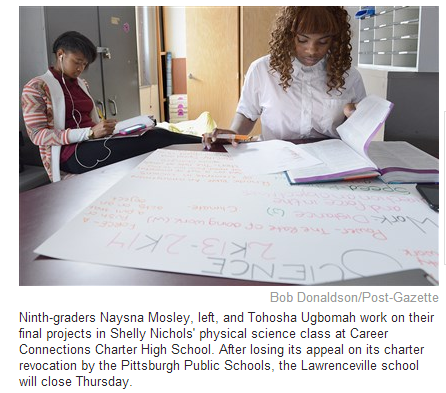On a trip home to visit my parents, I proudly announced that I was becoming a high school mathematics teacher. My parents thought I lost my mind. "Are you crazy? You should be a doctor or a lawyer! You have talent!" My mother cried; my father stated sternly "you are selling yourself short". At this point in my life when my parents told me to turn right I turned left... so I assumed I must have made a correct choice.
As a first year teacher I was up to my ears in learning how to become a quality teacher. I paid little attention to the union, the administration, tenure, seniority and the politics of education. I just wanted to get better fast. I found that my college classes did little to prepare me for the challenges of teaching. I also found that the school provided me with minimal support, it was sort of a sink or swim mentality. Most of my colleagues worked in an isolated fashion. I was lucky if I found one or two colleagues who might give me some advice. After a few years, I grew as a teacher and received tenure. Pennsylvania school regulations stated that if I completed two successful years of teaching I would receive tenure. Tenure meant that I could not be fired unless I had two consecutive years of unsatisfactory performance. Pennsylvania regulations also stated that I had 6 years to complete 24 post-baccalaureate credits and then I would receive my permanent certification. Once those two requirements were obtained, I was good to go.
In 35 years in public education I have experienced teaching as a teacher of mathematics, a high school principal, a mathematics supervisor, a coordinator of instructional technology and CEO of a charter high school. Here are some impressions:
- To this day I believe that teaching is an honorable profession. However, I realized very quickly that America does not agree. This is reflected by the very low quality of teacher preparation programs, the low pay compared to other professions, the constant negative media focus on student underachievement, the attack on publically funded employees, the attempt to eliminate teacher pensions, the hatred for teachers unions.
- Teachers unions were the best thing to happen to the profession. When I entered the profession, teachers unions were just evolving. Teacher salaries were pitifully low. My starting salary in 1975 was $8,700, while my friend, who graduated from CMU in engineering, was starting at $36,000. Benefits were minimal, nepotism was common, professional development was non-existent, class sizes were huge and the Principal (for better or worse) was the final word. The union improved working conditions, provided a reasonable salary and assured teachers of due process during disputes.
- Teachers unions were the worst thing to happen to the profession. They lessened our perception, both internally and externally as a "professional". Doctors, lawyers, accountants and other professionals are seen as highly educated, talented and worthy of both respect and compensation. Unions, by the specifics of our negotiated contracts with school districts, created the perception that we were laborers that work set hours, under very specific rules and are in an adversarial relationship with the administration. Unions focus on teachers, not on education and not on the students.
- The vast majority of teachers are very caring individuals who are in the profession to help students move forward. They truly enjoy working with children and their greatest compensation is not the salary, it is the thrill of success - students learning. I'm not naive to think we would do this for minimal compensation, I'm simply saying our passion is learning.
Public Education in general and teachers in particular are currently under attack. As I have articulated in many previous blogposts, the world has changed. Since The Nation At Risk report in 1983, we are living in a world where education for all students aligned with the 21st century economy is necessary. However, 30 years since the report, the institution of public education remains entrenched in its traditions. There is a vested interest (financial and political) in maintaining the institutions that make up our traditional education system - School Boards, Unions, University Schools of Education, Book Companies, State Boards of Education, etc. Since the "system" has not shown the flexibility or desire to change/reform/react to this new economy, politicians, business leaders and academics have entered the fray.
When the district lays off higher priced teachers to save money (not because they are doing a bad job).
When the union defends an incompetent teacher rather than encourages that teacher to get better or leave the profession.If the union and the district can't figure this out then the politicians and corporate community will weigh in.
Amanda Ripley, a writer, author and reporter, recently wrote an article that provides a third way to approach the whole issue of quality teachers. In her editorial, Train Teachers Like Doctors. she recommends an innovative method for selecting and preparing new teachers. Her approach is modeled after one implemented in Finland. It eliminates the knee jerk reaction that is so predictable in education dialogue by focusing on who is chosen to attend schools of education and the nature of their preparation.
Unlike the brawls we’ve been having over charter schools and testing, these changes go to the heart of our problem — an under trained educator force that lacks the respect and skills it needs to do a very hard 21st-century job. (In one large survey, nearly two in three teachers reported that schools of education do not prepare teachers for the realities of the classroom.) Instead of trying to reverse engineer the teaching profession through complicated evaluations leading to divisive firings, these changes aspire to reboot it from the beginning.The Finnish model is rigorous on two levels. First, only the best, brightest and most motivated students are able to apply and be accepted into teacher preparation programs. Second, teacher preparation is much more demanding than currently exists in America. Courses are more rigorous, hands on experience in actual classrooms begins immediately upon acceptance into the program and student teaching time is doubled.
Ripley's recommendation is powerful on two levels. It eliminates the standard adversarial dialogue among the existing constituents - districts and unions. And it professionalizes the most important vocation - teaching. She suggests that the way to break the current system's inertia and move education forward is to start at the beginning by getting the best and brightest individuals into the profession. It is hard to argue with her approach. Please read this article... It is excellent.
A final point. This discussion of teacher quality seems to always focus on minority students, poverty and the urban core. Please note that any measure of education quality, whether it is test scores, college retention, an educated workforce, or customer satisfaction suggests that public education in America, in the cities and the suburbs, has fallen far behind the rest of the world. We are talking about all teachers and all schools. Focusing the argument strictly on poverty and the have nots, although of value, does not get at the overall state of education in this country.
I have had a wonderful 35 year career in public education. Some failures, many successes and much learned. Both my mother and father apologized to me many years later. They were proud of my accomplishments as a teacher and very supportive when I opened a charter school. But little has changed regarding our society's perception of teachers. Now they are under attack. It is time to professionalize what we do.
We need to make teaching an honorable profession.











